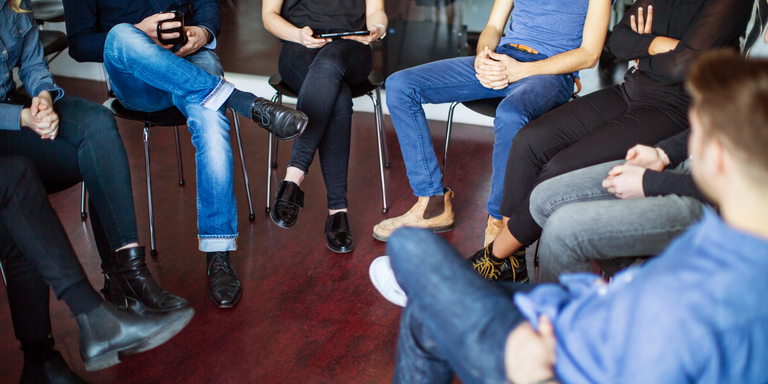
Design Thinking
Digitalisation is constantly reshuffling the cards. This raises questions: Is the tried and tested still worth preserving? Am I still marketable with my products and services? How can I increase my ability to innovate?
Innovation in the name of the user
Putting users at the centre of all thinking: That is the approach of design thinking. A method that we have been practising for over 25 years - long before it ended up in specialist books under this term. Design thinking is described as a process model consisting of several phases. The most common model - that of Stanford University and the Hasso Plattner Institute - speaks of: Understanding, Observing, Defining Point of View, Finding Ideas, Developing Prototypes and Testing.
Design thinking helps companies and organisations to find answers to complex questions and develop target group-focused solutions for products or services. The aim is to achieve the best result together in an iterative process - whether digital solutions for HR staff, AI-supported editorial processes or user-centric applications.

People, Place and Process
The three Ps play a key role in design thinking: people, places and process. The team should be interdisciplinary so that people can think beyond their own (specialist) boundaries. The premises also play an important role here - ideas develop best in an open working environment: a place of inspiration.
Thinking the unthinkable
In the six-stage, iterative design thinking process, the problem is finally worked through and initial solutions are developed - iteratively: this also means that different phases can be run through several times until the right solution is found. An open error culture is very important here. Design thinking is also about not only exploring the limits of what is feasible, but also thinking beyond them and testing the impossible.
Design thinking is not just about design issues, but about innovation itself, about solving complex problems. This also includes failing and restarting the process.

Design thinking as a holistic culture of innovation
Understand & Observe: The solution begins with a usability analysis. We want to know exactly what the challenge is: in terms of content, technology, strategy and economics. In the design thinking workshop, we develop user journeys, create personas to analyse target groups or work with practical examples.
Synthesis: After the analytical needs assessment, the insights gained are documented and structured, requirements are defined and target group needs are prioritised. A clear, common focus is the foundation of successful solutions. Methods such as card sorting support the evaluation.
Ideation & prototyping: We utilise the full creative potential to develop concrete prototypes from solution approaches. For us, design thinking is not about innovation at any price. The iterative design process helps us to understand that experiments, problems and failure are part of the process.
Testing: Prototypes are tested directly by users and critically reviewed by experts: Technology, usability, design, communication, marketing. The empirical-heuristic process ensures that we can incorporate improvements on an ongoing basis.
"With design thinking, we can leave traditional and outdated thought patterns behind and create a culture that is capable of mastering the digital transformation in the best possible way."